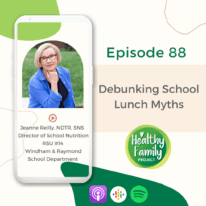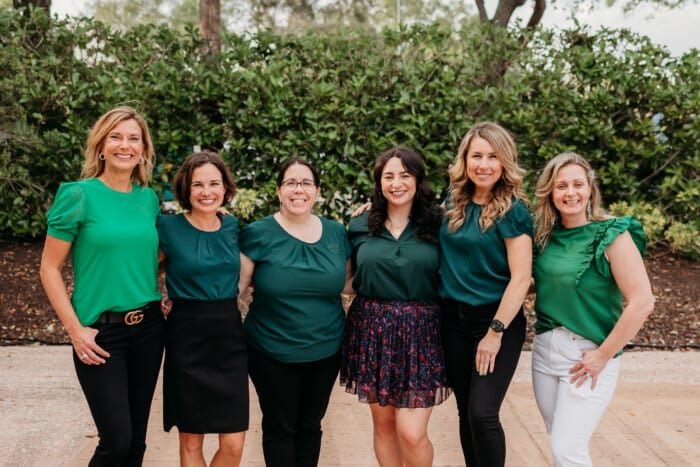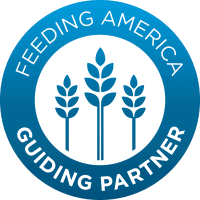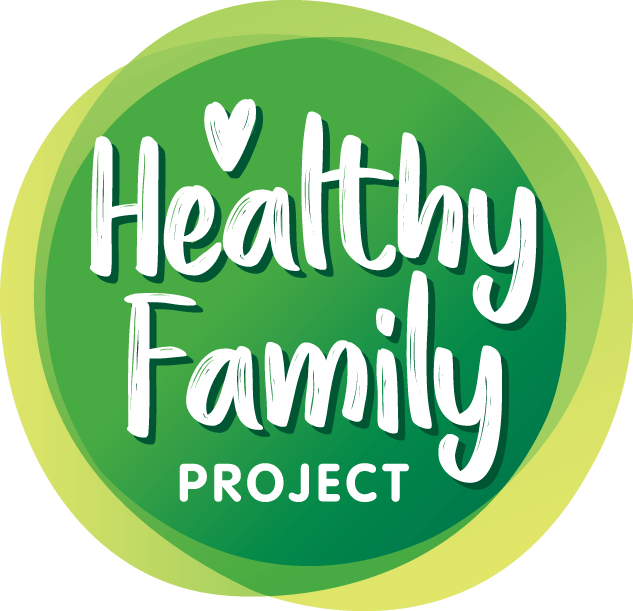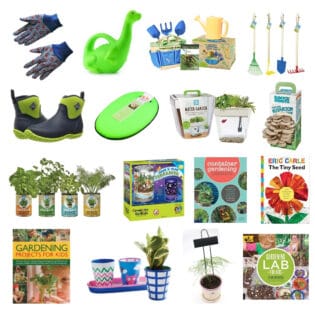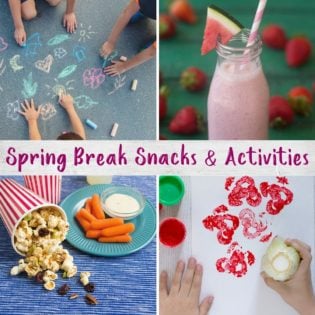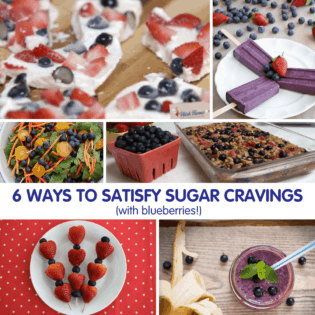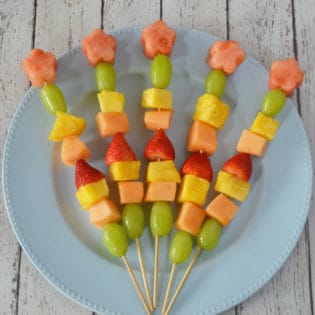Episode 62: Easy Ways To Avoid Added Sugars
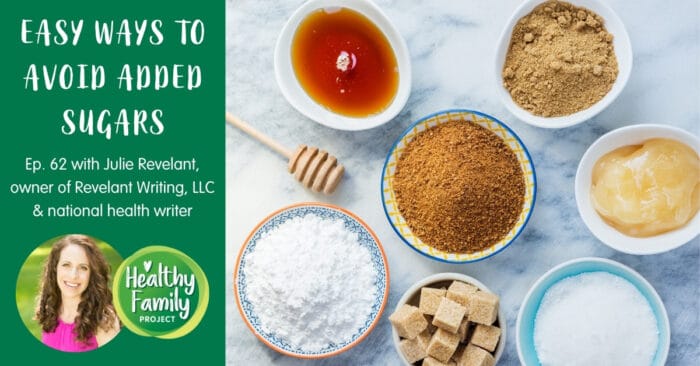
In this episode of Healthy Family Project, we talk to Julie Revelant, national health writer and owner of Revelant Writing, LLC. Julie covers everything families need to know about added sugars including hidden sugars in common foods, how to cut back on added sugar intake and tips for reading the nutrition label.
Julie Revelant is the owner of Revelant Writing, LLC, a firm that provides content marketing, copywriting and brand journalism services for the healthcare industry.
She is also a national health journalist and has written hundreds of stories for FoxNews.com, EverydayHealth.com, WhatToExpect.com, TheBump.com, RD.com, FIRST for Women and Woman’s World magazines.
For nearly 6 years, Julie wrote Healthy Mama for Fox News, where she covered pregnancy, postpartum, maternal and children’s health, and nutrition.
Julie is the founder of JulieRevelant.com, where she teaches parents how to raise healthy kids who not only accept—but crave healthy foods and host of a new podcast, Food Issues, which is set to launch in early 2021. Julie is a mom of 2 and lives in Bethel, CT.
Healthy Recipes & Tips in Your Inbox
Sign up for the Healthy Family Project e-newsletter to receive healthy recipe inspiration, our latest blog posts and more directly to your inbox each week.
Healthy Family Project Facebook Group
Join our Healthy Family Project Facebook group! This group will serve as a safe space for parents and caregivers to talk all about raising a healthy family – from dealing with a picky eater and tips to get more fruits and veggies onto plates to exercising as a family and mental health. We welcome all of you to join in!
Want to skip straight to a hot topic? See time stamps below. But of course, we recommend listening all the way through!
- 4:40 Meet Julie
- 6:25 Difference between natural and added sugars
- 9:07 Should we watch our natural sugar intake?
- 10:34 Common foods with sneaky hidden sugars
- 14:30 Why we should avoid added sugars
- 15:48 Recommended amount of added sugars for kids
- 18:15 Tips for reading the nutrition label
- 20:45 How to take the first step to reduce sugar intake
Relevant Links
- Check out Julie’s website
- Follow Julie on Instagram and Facebook
- What are added sugars?
- Sugars hidden in plain sight
- EWG Study – Children’s Cereal
- Added sugar recommendations
- New Nutrition Level
- 7 Changes to the Food Label
- What You Need to Know About Added Sugar
Other Podcast Episodes to Check Out:
- Episode 47: New Nutrition Label
- Episode 60: Teaching Kids to Prepare Healthy Snacks
- Episode 52: Fresh Produce 101: How to Pick, Clean & Store
Healthy Family Project Podcast
Conversations covering hot topics in the world of health, food and family with a dose of fun. Helping families ease their way into a new fresh and healthy world.
Be on the lookout for new bi-weekly episodes and don’t forget to subscribe on Apple Podcasts, Google Podcasts, Spotify or your favorite podcasting site. If you like an episode, make sure to leave a rating and comment.
If you are interested in being a guest on the Healthy Family Project podcast, contact amanda@healthyfamilyproject.com with your topic idea for consideration.
Transcript for Episode 62
This transcript was produced by Otter.Ai. Please forgive any misspellings and grammatical errors.
00:09
Welcome to the healthy family project by produce for kids, covering the hot topics in the world of health,
food and family with a dose of fun. Welcome back. All I hope 2021 is treating you well, so far. I am
hopeful in this new year, I’m crossing my fingers over here. You know, last year was was a year, it was
for sure. And so I think fresh starts are good. It’s always nice to have a fresh start, we can look ahead to
the future. And hopefully, we’ve learned some things in the past year that will will carry us on and make
us stronger, right? Looking ahead. So if you’re looking to stay on track and make some healthful but
simplistic changes in your family’s routine this year, be sure to follow healthy family project on all of our
social outlets and sign up for our weekly newsletter that pulls all of our content together in one spot direct
to your inbox, you don’t have to go to although we want you to be on our social outlets and interacting. If
you you know are super busy, you just want that straight to your inbox, you can sign up for a newsletter.
And I will link up to that in the show notes. It’s really nice and easy to digest once a week new recipes,
what’s going on seasonal things, new podcast episodes. And then have you joined our Facebook group.
If not, head over to Facebook and search healthy family project. This group is a safe space to share
thoughts and ideas on just about everything related to family. We do like to talk a lot about food. But I
think you enjoy the topics and conversations. They definitely go outside of the food realm and have been
very helpful for me. I know many of you are on Instagram, it’s one of my favorite platforms. So don’t miss
us over there. We are having fun these days sharing new reels and recipe ideas and just different things
that we have to share. You’ll see my face over there sometimes. So our team members, get on the story
and have conversations which is great. And we love to interact with all of you on that platform. We do
have several giveaways planned in the new year that we’ll be hosting on Instagram with some of our
amazing health conscious brand partners, you won’t want to miss out on those. And speaking of health
conscious brands, if you are one of those health conscious brands or know of one, we are really looking
for partners to align with our podcast in the new year in the new year. And people who and companies
who you know kind of match up with our overall mission. So feel free to send ideas our way. And we
would love to grow our healthy family project family and be able to introduce you to brands that make
sense for your family’s healthy journey. Today’s topic is all about added sugars and easy ways to avoid
those added sugars. It’s crazy when you take a deep dive into the world of added sugars, and just what
we consume on a daily basis. And I know we all had a rough 2020 We don’t need one more thing to
worry about. But this is important. It should be on your list of things to look at in the new year. You know,
when you really examine the repercussions on our, on the health of our, our this generation and
generations to come, something has to be done. And it starts really at home with all of our families. And
I’m excited today to have Julie relevant on we have been trying to schedule this conversation for some
time and the stars finally aligned and yes, yay 2021, aligning the stars. And we’re going to talk about this
today. Usually I run down background for our guests. But Julie is going to do that for us whenever we get
started chatting here. And so yeah, let’s have a great episode today and look forward to talking to Julie.
Let’s jump in. Welcome to the show. Julie. I know we’ve been working on scheduling for a while, as 2020
Things would have it. I’m not having a real clear picture of what we’re doing day to day, but I’m definitely
glad we can finally talk. So before we jump in and talk all about avoiding added sugars, can you tell
listeners a little bit about yourself and your background?
04:40
Absolutely. Well thank you so much for having me, man. I’m really excited and thrilled to be here. So my
background is as a health journalist I’ve written for Fox News everyday health, what to expect and first
for women and then other digital news outlets. And so for nearly six years I wrote a column called
Healthy mama for Fox News where it covers Pregnancy and postpartum maternal and children’s health
as well as nutrition and other general health topics men’s health. And I’m the owner of revelon writing,
which is a firm that provides content marketing, copywriting and brand journalism services for b2b
healthcare companies. And I’m also the founder of Julie revelon COMM where I teach parents how to
raise healthy kids who not only accept, but crave healthy foods, and I’m hosting a new podcast this year,
called Food itch food issues, which is set to launch early this year. And I’m a mom of two and I live in
Connecticut.
05:37
Awesome. And I did not know about the podcast. That’s great. Congratulations. Thank you. That’s gonna
be good. I feel like that is a topic that could go on and on, right. So I will be your first number one
subscriber, count here, count me in for that. So yes, thank you and you, you have lots of experience with
just being a mom, you know, just being a mom and living this life and kind of navigating the waters of
different health things that pop up. So definitely, we can all as parents relate to some of those things.
Alright, so let’s get started. basic, very basic question for you like to start basic. Can you define the
difference between added sugars and natural sugars?
06:24
Sure. So natural sugars are basically what they they are naturally occurring sugars like fructose, which
was found in fruit and lactose, which we find in dairy. And so although these foods do have sugar, they
also contain other nutrients that kids need in their diets or anyone needs in their diets like fiber and
calcium, for example. So added sugars, or any type of ingredient that sweetens foods and beverages
whether you can taste it or not so so sugar is pretty sneaky. And so even if something doesn’t
necessarily taste super sweet, there still could be added sugars in them. And so here we’re talking about
syrup and other caloric sweeteners. Things like brown sugar, confectioner’s sugar, dextrose, cane, cane
juice, and high fructose corn syrup, of course, gets a lot of attention. And so the same can be said for
fructose, which is considered natural when it’s consumed from real fruit. But once it’s used as a
sweetener in foods, it’s also considered an added sugar. And so along the same lines, when we talk
about natural sugars, a lot of people think, Well, honey, agave, maple syrup, all natural, right? They are.
But once they’re isolated, and then they’re added to a food as a sweetener, they’re actually considered
added sugars as well. And so added sugars aren’t only found in kid friendly foods, like cakes and cookies
and desserts and treats. But I don’t know if you know, but they can hide under 61 different names. And
they can be marketed as natural, or found in foods that aren’t even sweet, like I said, so it’s pretty sneaky
and hard to decipher.
08:11
Yes, I know. And I think this is why this topic is ongoing. I feel like it will just continue to be ongoing
because it is confusing, you don’t know. You just want it to be called Sugar, right? You will just want to
see like there’s an added sugar and I know it not have to, you know do a vocabulary quiz on 61 different
different names that it could be under. That’s so insane. So before, before we move on, I just and this is
kind of just I guess, not exactly down the path that we’re going but we talked about the natural sugars.
And I know sometimes people are concerned with the amount of fruit consumed or you know, those
types of sugars. So just just to hear it from you, because we’re talking about this difference between
natural and added. Is there an amount of natural sugars? Like do you need to cap off how many
strawberries you’re eating in one day?
09:08
Yeah, yeah, read up on this lot. And there are some experts who say sugar is sugar and the body
metabolizes it the same way and you should be watching what you’re eating, you know, you shouldn’t
just like any other food, everything in moderation, so you shouldn’t be eating 10 servings servings of fruit
a day. But again, you know, from where I where I stand, I think that there’s also nutrients in those natural
in fruit, and you’re getting fiber and you’re getting vitamins and minerals and antioxidants. I’m not so sure
people are going over board with fruit either, right? So I wouldn’t say that it’s anything that you should,
you know, should be mindful of it, but you shouldn’t be scrutinizing every single piece of UI. Okay,
09:57
got it. That’s that’s my that’s kind of my stance on it. But I know it’s a question we get a lot in our
Facebook group and in different social outlets Parents always want to know, you know,
10:08
can they have two bananas? I told them they can only have one. Yeah. All right. So I think a lot of
parents
10:16
think, well, my kid isn’t eating extra sugar, they’re not eating cakes. They don’t have cookies in the
house. They’re not having cookies every day, you know. So what are some food items, families and
consumers? You know, purchase regularly that might have added sugar that are surprising.
10:34
Yes, that is absolutely true. It’s sugar. Like I said, a sneaky and so even if you’re not bringing in all those
treats in your home, chances are your kids are getting a lot of sugar. So you know, the big groups are the
highly processed foods and even things that you may not think about like process, baby and kids snacks.
So not to name brands. But you know, there’s a lot of snacks for babies and toddlers now like crunchy
snacks, those may have added sugars in them, then you have, you know, again, highly processed foods,
so frozen meals and soups, even if they’re, they’re labeled as organic or natural. And then now we’ve
seen in recent years, this group of healthy junk food so you know, junk food made from chickpeas and
quote unquote, natural ingredients. And, you know, read those labels too, because there could absolutely
be added sugars, a lot of granola bars. The other big thing to watch out for is sneaky sugars at breakfast.
So most cereals or granola, even those, again, that are organic or natural can be really high in sugar.
This is a huge one. So in May 2014, the Environmental Working Group conducted a study and they
found that kids who eat a bowl of cereal every day for a year get a whopping 10 pounds of sugar in their
diets. Oh my goodness. And they also found that 92% of the cereals that they looked at contain added
sugars, even those again that are considered adult cereals or family cereals. So you may be thinking, yo
this is a healthy option but look on the label and there’s lots of sugar. So again, with breakfast, there’s
muffins and there’s pastries. School Breakfast can be a really big source of added sugar. Many schools
will serve breakfast like pastries and apple juice. There’s there’s a lot of sugar in school breakfast. Yogurt
is another really big one I would say just in my own experience looking and comparing labels, I’d say 90
95% of yogurts are high in added sugars. And then sports and energy drinks chocolate milk juice. So
juice again is natural sugar, but they’re juices that have added sugars in them certain brands will put
added sugars in them. And then I’ll read you a whole other list. So baby food again really obvious
sources baked goods, cookies, cakes, pastries, doughnuts, sauces, so barbecue sauce, ketchup,
marinara sauce, other sauces, salad dressings dipped, instant oatmeal in that breakfast category and
jams jellies, fruit preserves, syrup’s any sweet toppings. And again, even the the granola bars or any sort
of bar can be really high in sugar.
13:34
Okay, so what can we eat? Because that’s a long list. So I have my surprise over just the past couple
years was bread. I think this the bread that we were purchasing, and I my kids were like, what? I said,
Yes. Do you know how much sugars in this bread? They’re like, it’s not sweet? And I’m like, I know why
it’s so confusing. But there’s a lot of sugar in this bread.
14:01
Yes, that’s a good one, too. Yeah.
14:03
So what what can we do? So well, let me back up. So let’s talk about why these added sugars are bad
for us. And then we’ll kind of move into how we can kind of balance and obviously we can’t cut all of this
all of these things out. Maybe we can but it will be hard. So let’s talk about why the added sugars are bad
for us. And then we’ll move into how we can you know, balance and what the recommended amount is
and things like that.
14:30
Sure. So sugar is is considered you know, the the root cause of many diseases, chronic diseases that
we’re facing in the US and particularly in children. That would be childhood obesity, and especially now
it’s problematic because studies are coming out to show that with kids on distance learning or or maybe
they’re not on distance learning, they’re in school, but they’re not doing as many activities and there’s
more time spent at home. A lot of kids there’s more kids they expect To be diagnosed with childhood
obesity, and then of course, type two diabetes and non alcoholic fatty liver disease, both of which are on
the rise in children, which is pretty alarming. And then also risk factors for heart disease, asthma, and
then of course, your cavities.
15:17
Oh, yes. The cavities? Yeah. So that’s, that’s a list to really, you know, take a look at and be aware of,
because those are not things to mess around with, and not things that are easily, you know, reversed.
So, definitely, we need to, to take a look at those. So, alright, so is there a recommended amount of
added sugars? Or is it like zero tolerance here?
15:49
Now, again, I think everything in moderation, kids should be taught balance, so that things are not
forbidden in their lives. But yes, the American Heart Association says the kids under two shouldn’t have
any added sugar in their diets. And so kids between two and 18 should have no more than 25 grams or
six teaspoons of added sugar a day. For men, they should have no more than nine teaspoons and
women get less six teaspoons.
16:18
Geez, come on. Yeah, I’m sorry. No, no, that’s okay. I was gonna say is there somewhere we can link up
in the show notes. I’m sure you have either an article out there or reference somewhere that we can link
up to so that if anyone wants to quickly reference those, those recommendations, we’ll put those all in
the show notes. Sure.
16:41
And so it comes as no surprise that with all of these sneaky sugars, and all of the obvious sugars that
kids are getting, the CDC says that 16% of the total calories for children and teens comes from added
sugar. And in her book, Bettina, Aeleus Siegel and her book kid food, she estimates she ran, there’s a
part of her in her book where she goes through a typical day have, you know, a child and all these
different places they go throughout the day school, home sports parties, and she estimated that kids are
getting 75 to 100 grams of sugar a day, and that’s only from treats. So it’s pretty alarming. Yeah, yeah,
17:27
that’s high. Okay, now, how can we let’s talk about the nutrition labels, which is always where my stress
comes in, where I’m like, Ah, what is that word? I don’t. And so I’ve just resorted to if I don’t know what it
means. Or if I can’t pronounce it, I probably shouldn’t buy whatever that is. Yeah, that’s been my strategy.
So how can we avoid added sugars or overload of added sugars by reading nutrition labels? I know
there was a change in nutrition label recently, not not too far away, my time in 2020s is off. It could have
been like 20 years ago. I don’t, I wouldn’t. I wouldn’t really have that kind of on track this year. But
anyway, let us but what can we do to read these nutrition labels?
18:14
So depending on the size of the company, they had a deadline of last year and a deadline of early this
year to implement those new labels. And so that will make it easier for people to decipher whether a food
has added sugars or not. Okay, so are
18:34
there keywords we should be looking for on the nutrition label that mean red flag? Like I gave the
example for me, where if I can’t if I don’t understand the word or don’t know the definition of it, or if I can’t
pronounce it, I kind of move on. But what are some of those red flags?
18:51
Yeah, I think that’s an excellent strategy. If you can’t pronounce it, don’t buy it. But yes, so again, with
we’re looking at the nutrition, the nutrition facts label for that line of added sugars. And then there’s so
many different names again, for added sugars, but some of them I’ll call out for you. Your obvious brown
sugar, corn syrup, but then less obvious, maybe dextrose, evaporated corn sweetener, fruit nectar, invert
sugar, liquid fructose malt syrup, maltose molasses, nectars, which is a surprising one. sucrose, things
like that.
19:33
Okay. Now, where do we find this list? I’m sure you have a list somewhere that we could link up to?
19:39
Yes, I think it’s the USDA. But yes, it’s the USDA and I can send that to you.
19:43
Okay, perfect. So we’ll add anything that we’ve will, I’ll gather, we’ll gather all the links for you listeners
out there. So you can have a nice little resource area in the show notes to click through and kind of
revisit some of the things that we’ve talked about and I I feel like, you know, it’s a lot to you know,
especially if you’re a family that, you know, you’re just kind of going down the path like you’re Googling,
how can we avoid added sugars and you’ve come across this podcast, I feel like tiny steps are good
steps. So I mean, before we close out, I don’t think we had talked about this, Julie, but do you have any
recommendations on If a family is looking to kind of take the first steps in getting away from these added
sugars? Is there a good, like, instead of taking it all on at once and just removing it all? Is there a good
way or even as a parent that you can recommend that, you know, families can take that first step?
20:45
Absolutely. Yeah, I don’t recommend you pull everything at once. Because your kids are just going to
push back. And is it really realistic, kids should have some of those treats and learn how to be healthy,
balanced eaters in that way. So a good first step is is is to focus on real foods, though. So slowly,
gradually take out some of the processed snacks and, you know, replace them with with real Whole
Foods. So kids will eat things, that they see that they’re accessible. So putting a bowl of fruit out making,
you know, bins in your frigerator. So they can easily grab healthy snacks and real Whole Foods. So fruits
and vegetables, is really important. And again, gradually, you know, if you’re making meals, try to replace
some of the processed foods, if you’re using them with real Whole Foods, and eventually, your kids, their
their palates will change. And they’ll they’ll come around to the idea that this is how my family eats, they
just don’t eat a lot of snacks. My kids like to call it junky food. And they’ll always say, everyone else gets
junkie. I know, you know, you’re such a bad mom. And but at the same time, I know that they realize that
they are healthy eaters, and they do get that junky food, you know, in moderation on occasion, maybe a
few times a week. So it’s all about balance. So the other thing, again, is reading those labels, and I love
your strategy of if you can’t pronounce it, definitely don’t buy it. So stick with minimal ingredients and
things that you can recognize. And then finally, this is something I love to do, especially throughout the
year, but especially around the holidays is is sort of an obsession of mine is to go through and look at all
the food bloggers who you can find all these amazing recipes and make these healthy swaps and
substitutions with less sugar. So you can use things like fresh fruit, dried fruit, unsweetened applesauce,
sweet potatoes, pumpkin is a big one cacao, you can make homemade, you know, we make a
homemade ice cream, which is just literally I put bananas in the freezer, and I throw it into my Vitamix.
And that’s a sweet treat. And my kids love it. So there’s so many different ways to upgrade recipes and
cut back on the sugar and even when you’re baking, you can cut back some of the sugar, it’s not going to
affect that much of the taste, but it will go such a long way and in getting not only getting it out of their
diets, but just kind of tweaking your your taste buds because, you know, if you don’t eat sugar a lot, and
then you taste something that’s really really sweet. It’s so off putting we recently got some fast food and
my daughter had she pulled out the dressing to the salad and I looked on the back and it had like 16
grams of added sugar. And I said you’re not gonna like this, it’s gonna taste really sweet. And she could
not eat the salad because it was so sweet.
23:45
I know it’s it’s really interesting how your taste buds change over that that gradual, you know, removing
those things that when you hear that a lot with people who stopped drinking soda, like people that are
you know, I have several friends who you know, drink a coke everyday or a Pepsi whatever it might be.
And then when they kind of cut that out and then if they would go back and have it you know, months
later they’re like, oh my gosh, this is like getting stuck in my mouth. You know, it’s like that. I can taste
that sugar and I’d never tasted it before. Right? Really crazy. I was gonna say something that I’ve done.
My younger daughter especially learning from home, it’s like snack time all the time. So I can relate to
you with like, Oh, you’re no fun mom like everybody else. Believe me if when I take her to the grocery
store, she is like everyone else has this in their lunchbox and I’m the only one like she’s really good at
that. playing that part and making me feel bad. But I have to stand my ground but i She really likes the
goldfish crackers but I buy the portion little packs and I’ve been telling her you Get, there’s 12 that come
in it and I put it in the pantry. And I said, learning from home you get these are your this is your ration
week basic, like, yeah may choose how you want to eat it, you may choose to, like I’ve tried that giving
her the freedom, like you may choose to have for one day, but just know that this is all there is like, that’s
great. This is what you have. And I’m not I think in the past, especially whenever, you know, virtual
school first started, and I just felt so bad for them. Being at home, I know this is probably like a bad mom
move. But I was like, of course you’re out of goldfish, I must run to the like order you more goldfish or
like, go get the goldfish, you must have them to be happy. And then I was like, What are you doing? No.
And so that was just recently and she’s done really well with it. And you know, there’s some weeks by
Thursday, there’s no more and she’s like, there’s no more and I’m like, right. Yeah, so. Right. Right. Think
about it next week. Yeah, that’s great. So that’s worked out over here. But well, thank you for joining us
today. I feel like we covered a lot of ground, a lot of good ground, especially here as we kick off the new
year. And, and for anyone looking to make some gradual changes in their family’s eating habits. I think
this is a good place to start. And we’ll link up to all of Julie’s great content, because I’ve been going
through some of your posts out there that are living out there on the internet. And there’s there’s a lot of
good stuff. So we’ll link up to all of those. We will let you know when Julie’s podcast is live. So we’ll share
that out too. So that could be something fun for everyone to continue the conversation. And then there
are there other places that listeners can find and connect with you.
26:48
Sure. Well, thank you so much, Julie revelon, calm and on Instagram and Facebook.
26:53
Okay, perfect. Thank you so much. And hopefully we’ll have you back on here soon for another another
good topic.
27:00
Absolutely. Thank you so much, Amanda for having me.
27:03
Thanks for joining us today. It was great to finally chat with Julie and I look forward to her new podcast
we’ll be sure to share that info out. If you like the healthy family project, tell a friend and leave us a rating
it will only help our visibility so we can continue to create a healthier generation. If you want to tweet
direct with me. I met Amanda M Kiefer on Twitter, and also on Instagram and you can find healthy family
project on Facebook, Twitter, Instagram, Pinterest and YouTube. Be sure to subscribe Talk soon


